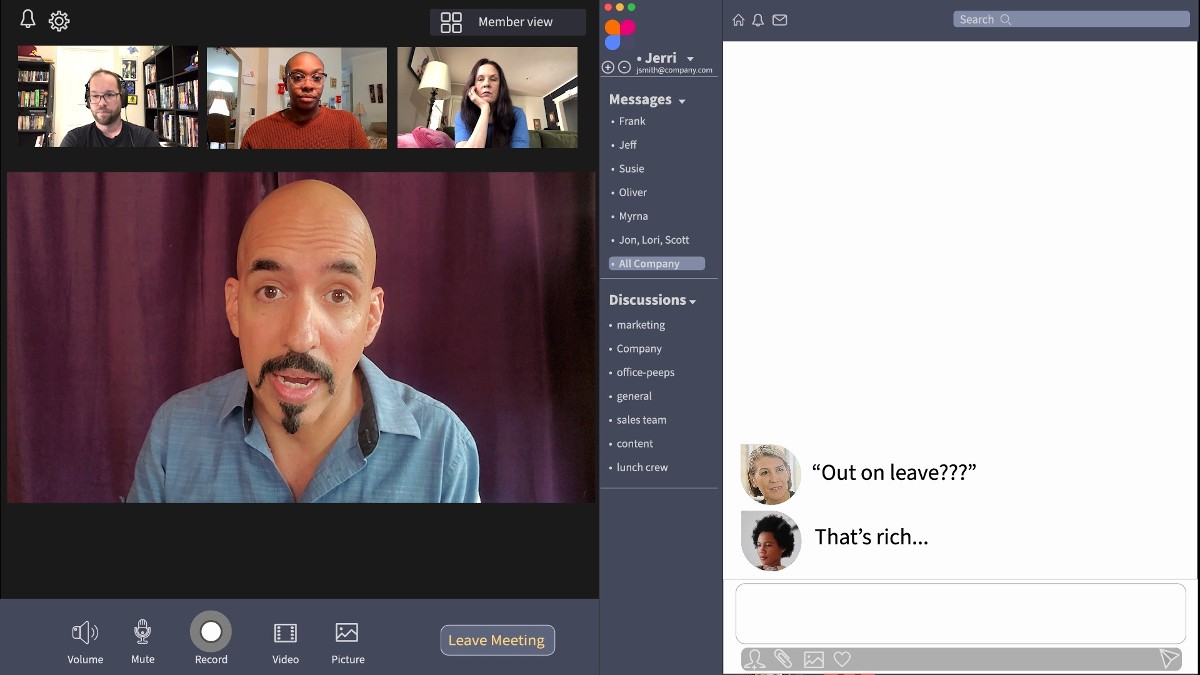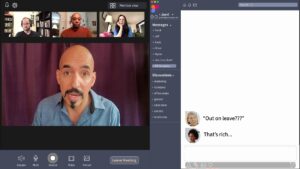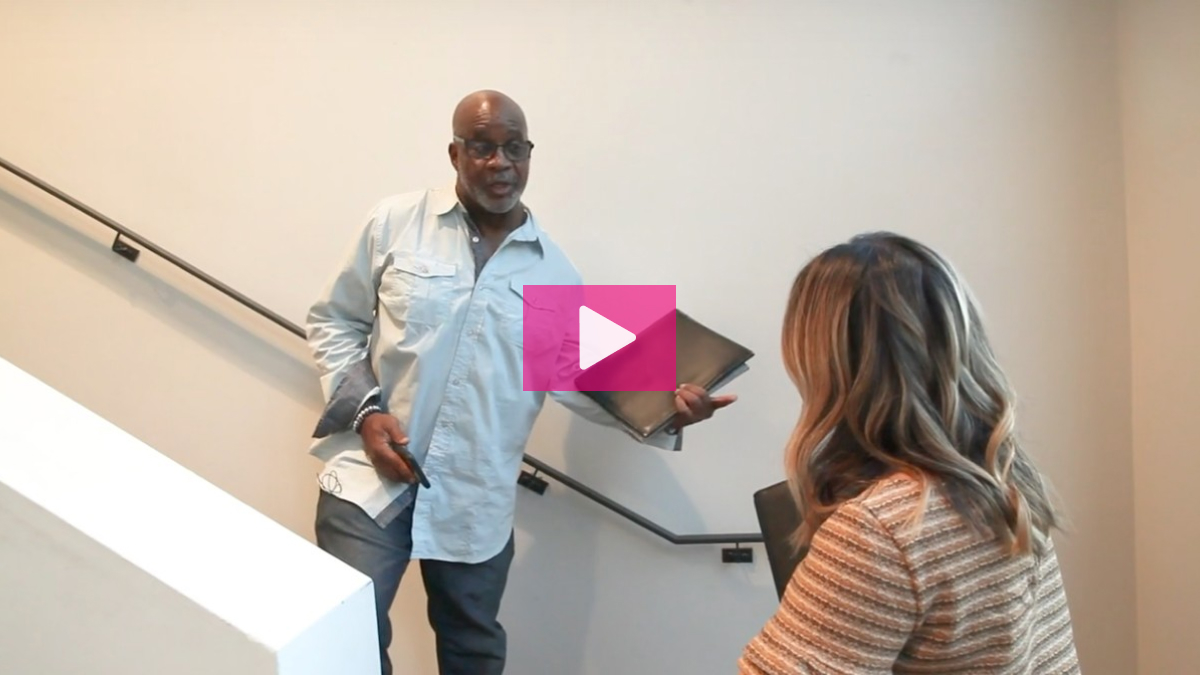Inclusive Language in the Modern Workplace: Navigating Nuances and Embracing Change
July 18, 2023 | 1 minute
Share This Video
Up Next...

Enhancing Team Communication: A Guide to Chat Etiquette in the Workplace
Based on a real event where, during a company-wide meeting on video conference, a CEO has some hard messages to share and the group chat becomes reactive, with a barrage of negative comments and emojis.
In this lighthearted scene, two colleagues are chatting and one mentions an upcoming “all hands” meeting. The other one admonishes the other, “we’re not saying that anymore”. Frustrated over yet another addition to the list of “off limit” phrases, he can’t even hear her explanation. After taking a breath, she rewords her message, he hears her and they are able to move on. De-escalation and finding a way to meet-in-the-middle are key to successfully discussing tricky issues around inclusion and belonging.
An upcoming “all hands” meeting comes up amidst a conversation between two colleagues. Sensing the need to promote an inclusive environment and adhere to the company's inclusive language guide, the term "all hands" is quickly flagged as obsolete.
Frustrated over yet another addition to the list of “off limit” phrases, the male employee can’t even hear his colleague's explanation. After taking a breath, she rewords her message, he hears her and they are able to move on. De-escalation and finding a way to meet-in-the-middle are key to successfully discussing tricky issues around inclusion and belonging.
Inclusion efforts have ushered in gender-neutral pronouns, a move from terms like ‘chairman’ to ‘chairperson’, and a shift in how social media posts are framed to ensure representation across identities ranging from Black (or African American) to Asian, Latino to Latinx, and Native American to American Indian. There is also an emphasis on adopting people-first language and identity-first language. For instance, phrases like "person with a disability" are preferred over "disabled person". Such changes also take into account the preferences of communities, such as the autism or deaf communities, who might lean towards identity-first language (e.g. from deaf person to person who is deaf).
A language that honors gender-neutral terms is championed not only for cisgender or transgender individuals but also for intersex, non-binary people, and the broader LGBTQIA community. The diverse American workplace, which includes people of color, multiple ethnicities, and speakers of various first languages such as Spanish, underscores the importance of understanding and implementing these nuanced linguistic changes.
Being mindful of word choice in all contexts, from job descriptions to casual interactions, goes beyond just avoiding a derogatory term; it's about understanding and valuing everyone regardless of age, mental health, socioeconomic status, or any other descriptor. There's recognition of the learning curve involved, especially when adjusting to inclusive terms. However, ensuring everyone feels valued and respected in a diverse environment remains the overarching aim of company DEI initiatives.
Playlist Videos

The Hotel Room
Two colleagues meet in a hotel lounge the night before their first pitch together.

Embracing Inclusivity: The Power of Pronouns in Today's Workplace
Three coworkers are having coffee when a new coworker's name is brought up, "She's awesome," he says.

The "Crazy" Client
Four coworkers discuss a difficult client who can't seem to make up their mind.

Cube Crawl: Addressing Workplace Culture at Major Companies
Male employees at a gaming company are conspiring about the "wild" workplace culture.

Inclusive Language in the Modern Workplace: Navigating Nuances and Embracing Change
Two coworkers talk about an upcoming “all hands” meeting when one stops and says “we’re not saying that anymore”...

Enhancing Team Communication: A Guide to Chat Etiquette in the Workplace
Based on a real event where, during a company-wide meeting on video conference, a CEO has some hard messages to share and the group chat becomes reactive, with a barrage of negative comments and emojis.
